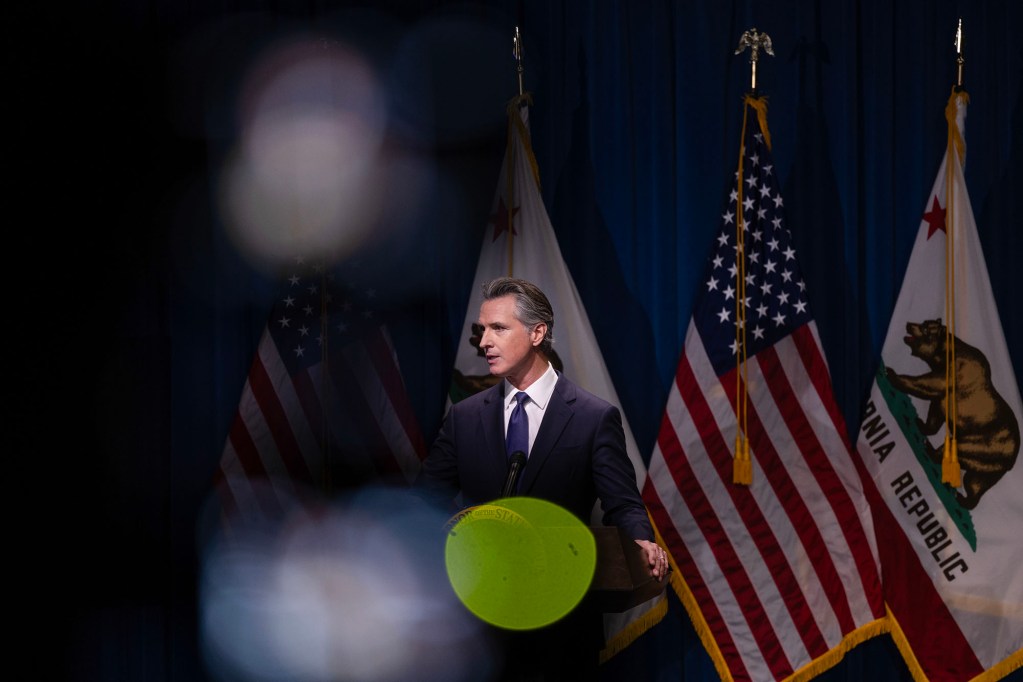Gov. Gavin Newsom and legislative leaders wrapped themselves in a blanket of self-congratulatory statements Saturday as they announced a deal to close a multibillion-dollar state budget deficit.
They praised themselves for dealing with the $44.9 billion gap between income and outgo without making major reductions in the state’s array of social welfare, health care and education services.
“This agreement sets the state on a path for long-term fiscal stability — addressing the current shortfall and strengthening budget resilience down the road,” Newsom said in a statement. “We’re making sure to preserve programs that serve millions of Californians, including key funding for education, health care, expanded behavioral health services, and combating homelessness.
“I’m grateful for the partnership of our legislative leaders in meeting this challenge with balanced solutions that continue to make progress on California’s priorities.”
Setting aside the self-serving verbiage, there are two salient features of the $297.9 billion budget that Californians should keep in mind — the first being that the budget crisis was self-inflicted.
As the state’s economy emerged from a brief but severe recession during COVID-19 and federal relief funds were pumped into the state, revenues spiked to more than $200 billion. Based on that one-time event, in 2022, Newsom’s administration projected that revenues from the state’s three major sources — sales taxes and personal and corporate income taxes — would continue to generate more than $210 billion a year.
Newsom declared that the state enjoyed a $97.5 billion budget surplus and boasted, “No other state in American history has ever experienced a surplus as large as this.”
It was a monumental error. In fact, revenues from the three biggest sources have been running well under $200 billion ever since, and are now estimated to remain below that level. As Newsom’s revised 2024-25 budget acknowledges, those revenues over a four-year period are now projected to be an incredible $165 billion less than originally expected two years ago.
The false revenue and surplus estimates fueled a sharp uptick in spending. As revenues failed to meet expectations, the budget experienced a structural gap between income and outgo. Had Newsom and others in the Capitol not convinced themselves that they had money to burn, there would have been no deficit.
The second thing that Californians should know about the budget deal: Despite the claims from politicians that it contains, in Newsom’s words, “balanced solutions,” in fact it is imbalanced by many billions of dollars. It contains an estimated $211 billion in general fund spending, but the state expects to raise only about $192 billion in general revenue during the 2024-25 fiscal year.
The gap will be filled largely by tapping the state’s reserves, meant to cushion the impact of an economic downturn, some minor tax increases and indirectly borrowing money that will have to be repaid later.
One major example of the latter is withholding about $8 billion in constitutionally mandated state aid to schools, making it up by using $8 billion in one-time school reserve funds, and then repaying the $8 billion sometime in the future.
Another is suspending the ability of large- and medium-size businesses to deduct net operating losses on their income tax returns for three years, and then allowing them to recapture those deductions in future years when, it’s assumed, the state is in better financial condition.
There are other gimmicks too numerous to list, but the deal’s overall theme is maintaining business more or less as usual and then hoping that the state’s economy will generate enough money in future years — sometime after Newsom’s governorship ends — to make things truly balance out.

